This is a continuation of Melting Materials for Mold Making, where we describe some of our experiments to create molds of wax, chocolate, and jello using 3D printed models and silicone molds, and 3D-Designed Molds for Baking and Freezing, where we experiment with baking and freezing food using silicone molds.
Our focus is using 3D prints to fabricate molds for culinary exploration. To determine what types of 3D designs and recipes work well to create customized, detailed dishes, we held a workshop with culinary enthusiasts.
Participants were invited to attend a workshop, which introduced them to our software system and workflow for generating 3D food molds. Over the course of the following week, they submitted drawings and photographs to be converted into 3D prints by our system. The participants then experimented with different recipes in their own homes, and kept in touch with the group by sharing their designs and recipes through a private group on a social network. During this time, they also had the option to create additional designs, and those were 3D printed and made into silicone molds for them to experiment with.
Types of Molds and Designs
The most common participant requests were to make multiple silicone molds of each print, create interconnected designs, and fabricate additional silicone molds of household items.
Several of the participants requested the option to make multiple silicone models of each 3D design. While it takes 2-3 hours to create one of the 3D prints, each silicone mold can be made in about thirty minutes. As such, participants were able to make several silicone molds from a single 3D print. This is a clear benefit of using molds over directly 3D printing the food, since having multiple molds allowed the participants to have several copies of the food design made simultaneously, whereas a 3D printer can only create one copy at a time.
Participants also noted the usefulness of interconnected designs. Such designs are beneficial because they allow relatively simple designs to be multiplied into complex forms, and, by changing the number of molds used, allow meals to be scaled to the needs of the person cooking.
below: examples of interconnected designs
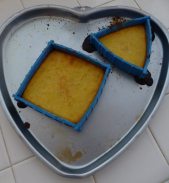
![]()
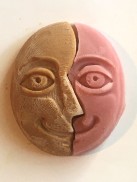
In addition to making molds from 3D prints, two participants also made silicone molds of household objects. The downside of deeper shapes is that they limit the types of food that can be molded. In order to remove the original reference object, the silicone mold had to be cut in half and then pressed together when the food mold is being set. While this works for thick batter or melted chocolate, participants found that materials like liquid gelatin or egg whites will leak out through any cuts in the silicone mold before they have time to harden.
below: examples of molds made from household objects
![]()
![]()
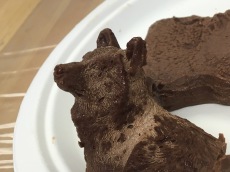
Recipes and Food Experiments
Most of the participants focused on single-ingredient foods that could easily transform from a liquid to a solid state, such as chocolate, egg yolk, gelatin, pancake, and flan. As our participants discovered from their experiments, other materials, such as wonton wraps, can also be shaped in the models, though they require the use of simpler molds composed of smooth surfaces.
below: example of wonton wraps
![]()
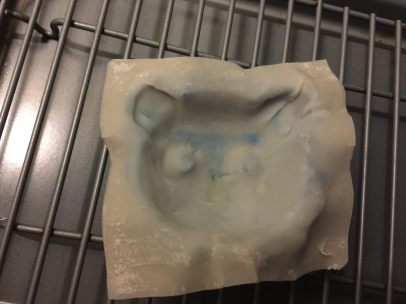

For designs, participants suggested using food appearance and shape to encourage diners to make healthy choice. In addition, they were interested in using the shape of the food to confuse or intrigue the diner as to what taste they may encounter.
Limitations
Overall, our participants’ experiments revealed that molds with smooth surfaces worked well universally, whereas molds with fine details worked best with frozen and gelatin based foods. Hot foods were the most problematic, as they are often soft and difficult to remove form the molds. Depending on the ingredients, it may be more effective to freeze the meal into the mold, remove it, and then re-heat the food.
Future Opportunities
In the future, 3D models can be tailored more specifically to the foods they are applied to. For instance, our software might be altered to preview several different 3D models from one 2D image to show variable levels of detail and depth. Each 3D model could then be customized to maximize detail based on the specific attributes and limitations of the different foods being worked with. That way, culinary enthusiasts could visualize and compare what the finished dish would look like depending on their design and choice of ingredients.
below: examples of same molds being used to make different foods. In the future, models could be generated to best serve different food materials
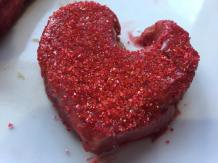
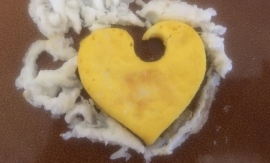
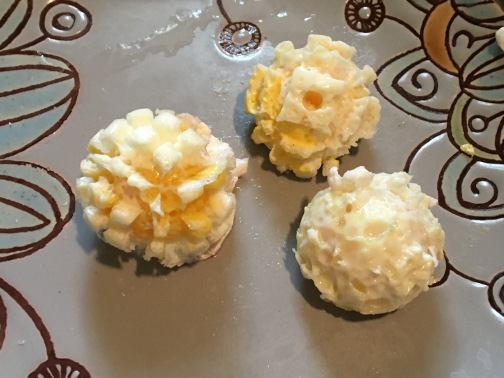

Since our participants enjoyed and appreciated the social-sharing aspects of this study, it could be beneficial to create a broader social sharing platform to aggregate 3D designs and recipes, thereby scaffolding a broad base of knowledge to advance and expand what food enthusiasts can create.
In addition, our approach offers insights for developing future high fidelity food-based 3D printing technologies. For example, our study shows that there is a definite interest in providing healthier options, as well as a desire to create several portions simultaneously in order to facilitate a shared dining experience. This indicates that future food 3D printers could focus on offering expanded food options outside of sweets and treats, and explore ways of generating food that encourages a communal, rather than isolated, dining experience.
Since food 3D printing technology could potentially become ubiquitous in future years, it would be prudent to make sure the technology does not inhibit, and hopefully tacitly encourages healthy eating and social engagement.
No comments:
Post a Comment